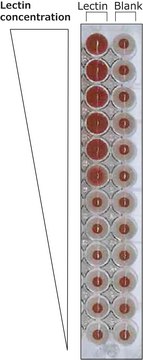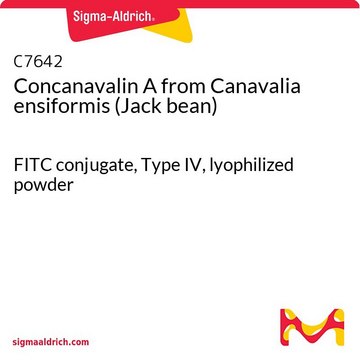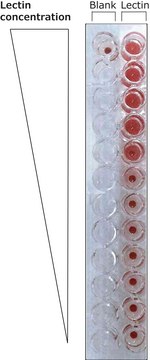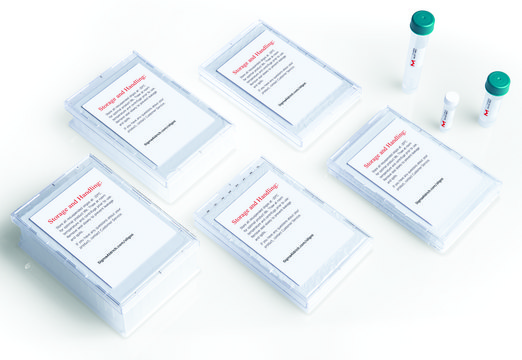L0401
Lectin from Lycopersicon esculentum (tomato)
FITC conjugate, buffered aqueous solution
Synonyme(s) :
Lycopersicon esculentum agglutinin, LEA
Se connecterpour consulter vos tarifs contractuels et ceux de votre entreprise/organisme
About This Item
Code UNSPSC :
12352202
Nomenclature NACRES :
NA.32
Produits recommandés
Conjugué
FITC conjugate
Niveau de qualité
Forme
buffered aqueous solution
Ampleur du marquage
2.0-6.0 mol FITC per mol lectin
Température de stockage
2-8°C
Vous recherchez des produits similaires ? Visite Guide de comparaison des produits
Catégories apparentées
Description générale
Lectins are carbohydrate binding proteins. Lectin from Lycopersicon esculentum (LEA) binds strongly to polylactosamine oligosaccharides. It is the major component of endothelial and epithelial cell surface carbohydrate.
Application
Lectin from Lycopersicon esculentum (tomato) has been used:
- for immunofluorescence staining
- for the quantification of vascular perfusion
- for the evaluation of gel perfusion efficiency
Actions biochimiques/physiologiques
LEA is not blood group specific, but has an affinity for N-acetyl-β-D-glucosamine oligomers. The lectin is a glycoprotein containing approx. equal amounts of protein and carbohydrate and is reported to inhibit the mitogenic activity of phytohemagglutinin from Phaseolus vulgaris. This lectin binds endothelial cells and is used to visualize the microvasculature.
Lectin has anti-cancer, anti-human immunodeficiency virus (anti-HIV), anti-microbial infection and blocks mucosal atrophy. It reduces type 2 diabetes and obesity, stimulates nutrient absorption and drug targeting. It is used to stain the vascular tree in the spinal cord and brain of animals. Lectin agglutinates cells and precipitates polysaccharides and glycoproteins.
Conditionnement
Sold on the basis of mg active conjugate.
Forme physique
Solution in 10 mM HEPES, 0.15 M NaCl, pH 7.5, containing 0.1 mM Ca2+, 0.08% sodium azide and 5 mg/mL β-cyclodextrin.
Remarque sur l'analyse
Agglutination activity is expressed in μg/ml and is determined from serial dilutions in phosphate buffered saline, pH 7.3, of a 1 mg/ml solution. This activity is the lowest concentration to agglutinate a 2% suspension of human erythrocytes after 1 hour incubation at 25 °C.
Code de la classe de stockage
12 - Non Combustible Liquids
Classe de danger pour l'eau (WGK)
WGK 2
Point d'éclair (°F)
Not applicable
Point d'éclair (°C)
Not applicable
Faites votre choix parmi les versions les plus récentes :
Déjà en possession de ce produit ?
Retrouvez la documentation relative aux produits que vous avez récemment achetés dans la Bibliothèque de documents.
Les clients ont également consulté
Notre équipe de scientifiques dispose d'une expérience dans tous les secteurs de la recherche, notamment en sciences de la vie, science des matériaux, synthèse chimique, chromatographie, analyse et dans de nombreux autres domaines..
Contacter notre Service technique









